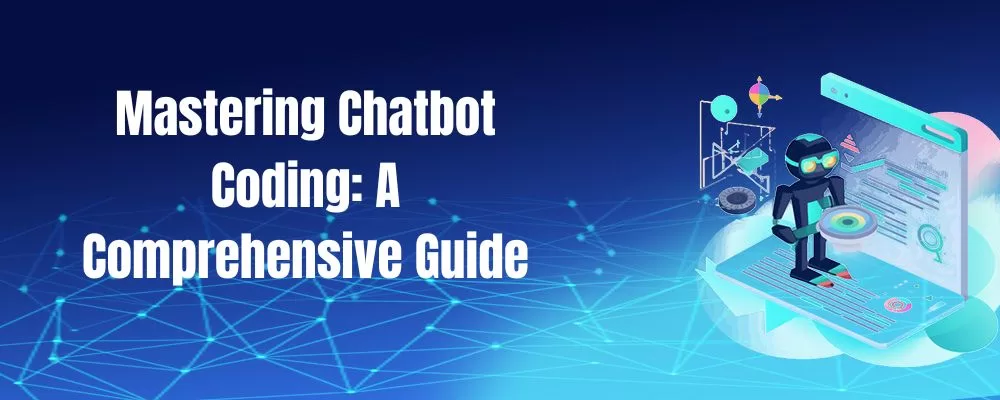Introduction to Chatbot Coding
Definition of Chatbot Coding
Floatchat Chatbot coding refers to the process of creating and programming chatbots, which are artificial intelligence (AI) programs designed to interact with users through natural language conversations. It involves developing the underlying algorithms, logic, and user interfaces that enable chatbots to understand and respond to user queries or commands effectively. Chatbot coding combines elements of computer science, linguistics, and AI to create intelligent virtual assistants capable of simulating human-like conversations.
Importance and Applications of Chatbots in Various Industries
In today’s digital age, chatbots have become increasingly prevalent due to their vast potential in enhancing customer experiences, boosting operational efficiency, and driving revenue growth across various industries. They act as virtual agents that can engage with customers 24/7, offering personalized assistance, answering frequently asked questions, providing product recommendations, handling transactions, and more. In e-commerce, chatbots can guide customers through the buying process by offering real-time product information and responding to inquiries about shipping options or returns.
In finance, Teloz AI-powered chatbots can assist customers with account inquiries or provide financial advice based on their preferences and spending patterns. The healthcare industry benefits from chatbots as well – they can schedule appointments, offer basic medical advice based on symptoms provided by users or connect them with healthcare professionals.
Moreover, chatbots find applications in support ticket systems where they provide immediate responses to common queries or route complex issues requiring human intervention. Additionally, they are employed for lead generation in marketing campaigns by engaging potential customers through interactive chats that gather information for targeted follow-ups.
Overview of the Chatbot Development Process
Developing a functional and intelligent chatbot involves a systematic approach encompassing several stages: 1. Requirement Analysis: This initial phase involves understanding the goals of the chatbot project – whether it is customer support, sales assistance, or information retrieval.
Identifying the target audience and their needs helps shape the chatbot’s functionalities and conversational flow. 2. Designing Conversational Flow: Here, developers create a blueprint of how the chatbot interacts with users.
This includes mapping out possible user inputs and designing appropriate responses using branching logic or state machines to ensure smooth and context-aware conversations. 3. Natural Language Processing (NLP) Integration: NLP techniques are applied to extract user intents and entities from their messages accurately.
NLP libraries like NLTK or spaCy are often used to process text input, tokenize words, detect sentence structures, and perform sentiment analysis for natural-sounding responses. 4. Machine Learning Model Training: To enhance chatbot performance, machine learning models are trained on large datasets of human conversations.
Understanding the Basics of Chatbot Coding
Programming languages commonly used for chatbot development
When it comes to chatbot development, several programming languages have gained prominence due to their versatility and ease of use. Python and JavaScript are two popular choices for building chatbots.
Python, a high-level, interpreted language, offers extensive libraries and frameworks like NLTK (Natural Language Toolkit) and spaCy that are specifically designed for natural language processing (NLP) tasks. JavaScript, on the other hand, is widely used for developing web-based chatbots and can be seamlessly integrated with front-end frameworks like React or Angular.
Another notable programming language is Ruby, known for its simplicity and readability. Ruby’s elegant syntax makes it a preferred choice for developers who value clean code.
Additionally, Java remains relevant in the field of chatbot development due to its robustness and scalability. Its extensive ecosystem enables developers to leverage powerful machine learning libraries like TensorFlow or PyTorch.
Introduction to Natural Language Processing (NLP) and its role in chatbot coding
Natural Language Processing (NLP) plays a crucial role in chatbot coding by enabling machines to understand human language inputs and respond accordingly. NLP involves various techniques such as tokenization, part-of-speech tagging, named entity recognition (NER), sentiment analysis, and more. Tokenization involves breaking down textual input into smaller units called tokens.
These tokens can be words or even smaller units like characters or subwords. Part-of-speech tagging helps identify the grammatical structure of each token in a sentence by labeling them with their corresponding parts of speech such as nouns, verbs, adjectives, etc.
Named Entity Recognition (NER) is particularly important in understanding user intent as it identifies relevant entities such as names of people, organizations, locations from user input. Sentiment analysis allows the machine to comprehend the emotional tone of user text, facilitating more empathetic and contextually appropriate responses.
Overview of machine learning algorithms used for chatbot training
Machine learning algorithms are vital in training chatbots to understand and respond intelligently to user queries. There are several commonly used algorithms in chatbot development: 1. Rule-based approach: In this approach, the developer defines a set of rules or patterns that the bot uses to recognize intents and generate appropriate responses.
This method is effective when handling simple and predictable user interactions but may lack flexibility as it cannot handle unknown queries. 2. Supervised learning: This approach involves training a model using labeled data, where human experts provide predefined intents and corresponding examples of user inputs.
The model learns from these examples to recognize similar patterns in new incoming messages. 3. Unsupervised learning: Unlike supervised learning, unsupervised learning does not rely on labeled data.
Instead, it allows the model to discover patterns or clusters within the data without any prior knowledge of expected outputs. This approach is useful when dealing with large amounts of unstructured data.
User Interface Design
Creating an interactive and user-friendly interface for the chatbot is crucial to ensure a seamless user experience. The user interface (UI) design involves designing the visual elements and functional components of the chatbot.
A well-designed UI can enhance engagement and make interactions with the chatbot more intuitive. When designing a chatbot UI, it is important to consider the platform on which it will be deployed.
Whether it’s a bot de Facebook Messenger or an al chat bot integrated into a website, the UI should be tailored to match the platform’s design guidelines and conventions. Text-based interfaces are commonly used in chatbots, allowing users to input their queries or commands through text messages.
These interfaces typically present conversations as a series of text bubbles, making it easy for users to follow along. To enhance user engagement, designers can use HTML and CSS to style the conversation bubbles and add visual elements like emojis or images.
In addition to text-based interfaces, voice-based interfaces have gained popularity with advancements in speech recognition technology. This allows users to interact with the chatbot using voice commands instead of typing.
Voice-based interfaces utilize technologies like automatic speech recognition (ASR) and natural language understanding (NLU) to convert spoken words into text that can be processed by the chatbot. Implementing both text-based and voice-based interfaces provides users with flexibility in how they interact with the chatbot, catering to individual preferences and accessibility needs.
Intent Recognition and Entity Extraction
Intent recognition is a fundamental aspect of building effective chatbots that can understand user queries accurately.
To recognize user intents, developers can employ various techniques. Natural Language Processing (NLP) libraries like NLTK or spaCy offer pre-trained models and tools for intent recognition.
These libraries use machine learning algorithms to classify user input into different predefined intents or categories. The training data for these models typically involves labeled examples of user queries grouped by their corresponding intents.
Entity extraction goes hand in hand with intent recognition as it involves identifying specific pieces of information within the user input. Entities are important elements related to the intent, such as names, dates, locations, or any other relevant data that needs to be extracted and processed by the chatbot.
NLP libraries like NLTK or spaCy also offer entity recognition capabilities. These libraries use techniques like named entity recognition (NER) or part-of-speech tagging (POS) to identify and extract entities from user input.
Dialog Management
In order to maintain meaningful conversations with users, chatbots require effective dialog management mechanisms. Dialog management involves designing a conversation flow that guides interactions between the chatbot and users.
State machines are commonly used in dialog management for chatbots. A state machine represents different states that a conversation can be in along with transitions between those states based on certain conditions or triggers.
Each state represents a stage in the conversation where specific actions can be taken by the bot based on user inputs. Rule-based systems can also be implemented for dialog management.
In this approach, developers define a set of rules that define the behavior of the chatbot based on user inputs. These rules can include conditions and corresponding actions to be taken by the chatbot in different scenarios.
Implementing context-awareness is crucial to maintain continuity in conversations. Context-aware chatbots have the ability to remember previous interactions and use that information to provide more personalized and coherent responses.
Advanced Techniques in Chatbot Coding
Sentiment Analysis and Emotional Intelligence
Sentiment analysis is a powerful technique in chatbot coding that enables the understanding of user emotions, allowing for more personalized and empathetic interactions. By analyzing the sentiment behind user input, chatbots can gauge whether a user is expressing joy, frustration, anger, or sadness. This information can be invaluable in tailoring the bot’s responses to provide appropriate support or assistance.
There are various sentiment analysis techniques that developers can employ when building chatbots.
Another technique involves utilizing machine learning algorithms to train models on labeled datasets to identify different sentiments accurately. Implementing emotional intelligence in chatbots goes beyond just sentiment analysis.
Neural Networks and Deep Learning
Neural networks play a vital role in building intelligent chatbots capable of understanding complex language patterns and providing accurate responses.
Deep learning frameworks like TensorFlow or PyTorch have become popular tools for implementing neural networks in chatbot development due to their extensive libraries and optimized computational capabilities. These frameworks provide developers with pre-built modules for natural language processing (NLP) tasks such as text classification, named entity recognition, and sequence-to-sequence modeling.
By employing deep learning models, chatbots can learn from large datasets and improve their language understanding capabilities over time. This enables them to handle a wide range of user queries and conversations more effectively.
For example, a health chatbot utilizing deep learning techniques could accurately interpret symptoms described by users and provide relevant medical advice or direct them to appropriate healthcare resources. In addition to language understanding, neural networks are also instrumental in generating human-like responses.
Chatbot Deployment and Integration
Deploying a Chatbot on Various Platforms
Deploying a chatbot on various platforms is essential to maximize its reach and effectiveness. One of the most common deployment options is through the web. This means hosting the chatbot on a website, allowing users to interact with it directly from their browsers.
Web deployment offers convenience and accessibility, as users can access the chatbot without the need to download any additional applications. To deploy a chatbot on the web, developers can integrate it into their existing websites or create dedicated landing pages specifically for the chatbot.
Conclusion
Chatbot deployment and integration play a vital role in realizing the full potential of these conversational agents. Deploying a chatbot on various platforms, especially through web deployment, allows for widespread accessibility and ease of use for users.
By integrating chatbots into websites or creating dedicated landing pages, businesses can enhance customer engagement and improve their overall user experience. Whether opting for self-hosting, cloud-based solutions, or utilizing Chatbot-as-a-Service providers – developers have multiple choices when it comes to deploying chatbots.
Each option has its advantages and considerations. However, with careful planning and implementation, organizations can create intelligent and efficient chatbots that cater to their specific needs.


